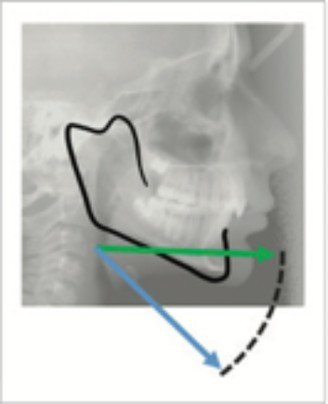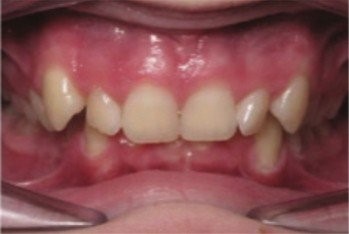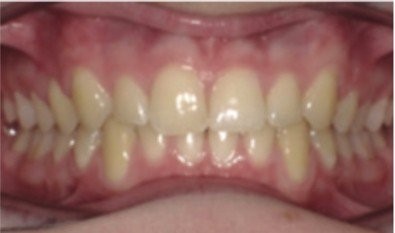The patient is a 14-year-old male whose chief concern is overbite and crowding. The orthodontic diagnosis on the right side is Class II molar and canine (moderate). On the left side, it is Class II molar and canine (severe). The overbite is a severe deep bite, and the upper arch has moderate crowding with retroclined incisors. The lower arch has moderate crowding, and the horizontal mandibular development (green arrow) has a greater amount of sagittal change than mandibular development, which contains a vertical component (blue arrow).
Invisalign treatment with mandibular advancement utilizes integrated precision wings to advance the mandible without the use of interarch elastics. The precision wings in the lower aligners position the mandible forward by sliding against the precision wings in the upper aligners. At the same time, the active portions of the aligners straighten the teeth and coordinate the arches to remove interarch interferences and stabilize the sagittal changes. This approach maximizes the horizontal component of the mandibular advancement and minimizes unwanted vertical changes.
We only want to do this when the maxilla has more than enough development and we are just trying to advance the lower jaw.




Patient Before

Patient With Invisalign Mandibular Advancement Appliance on His Teeth

Patient After
Invisalign Treatment With Mandibular Advancement — How It Works
Invisalign Treatment With Mandibular Advancement
